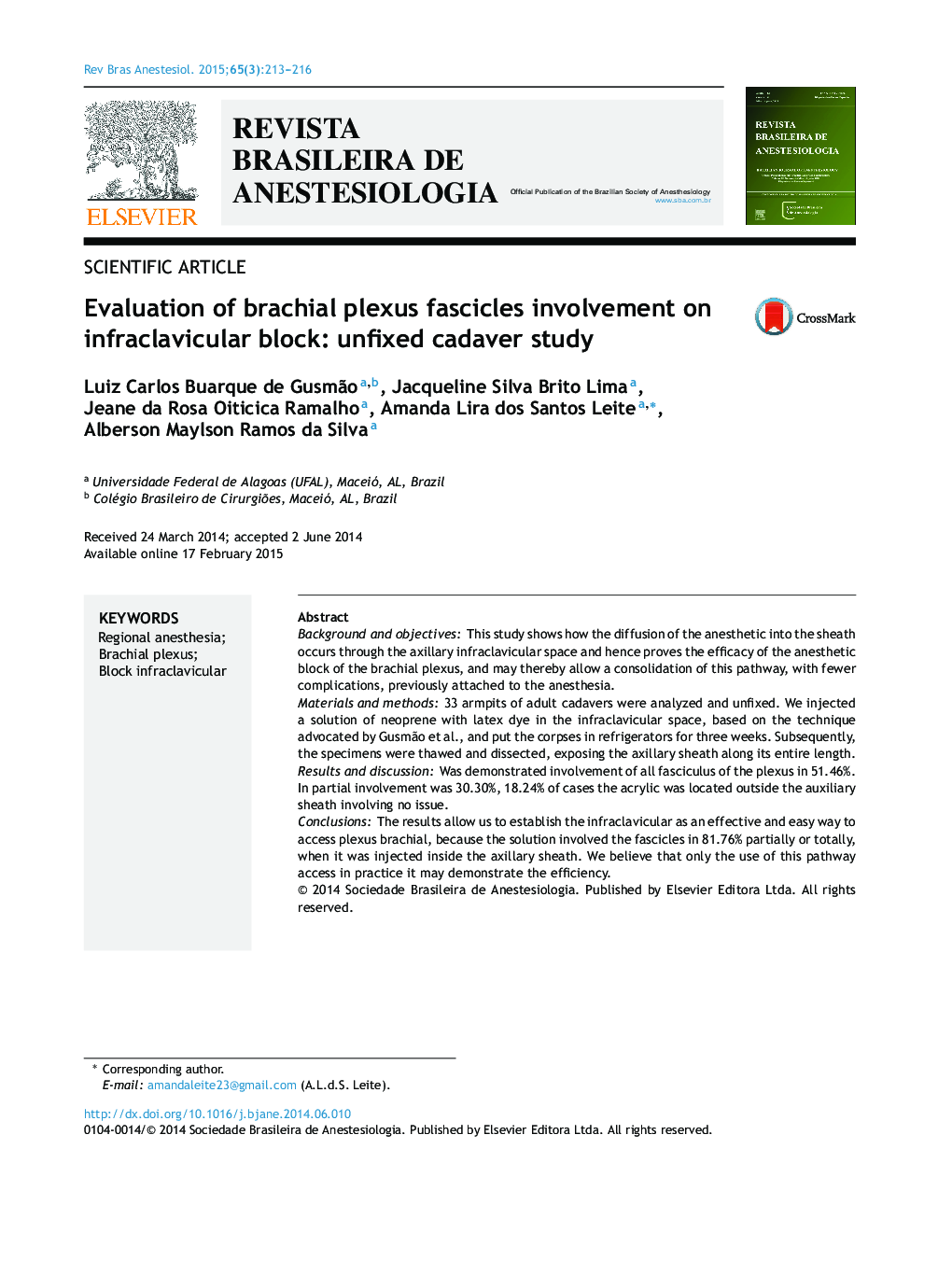| کد مقاله | کد نشریه | سال انتشار | مقاله انگلیسی | نسخه تمام متن |
|---|---|---|---|---|
| 2750356 | 1567304 | 2015 | 4 صفحه PDF | دانلود رایگان |

Background and objectivesThis study shows how the diffusion of the anesthetic into the sheath occurs through the axillary infraclavicular space and hence proves the efficacy of the anesthetic block of the brachial plexus, and may thereby allow a consolidation of this pathway, with fewer complications, previously attached to the anesthesia.Materials and methods33 armpits of adult cadavers were analyzed and unfixed. We injected a solution of neoprene with latex dye in the infraclavicular space, based on the technique advocated by Gusmão et al., and put the corpses in refrigerators for three weeks. Subsequently, the specimens were thawed and dissected, exposing the axillary sheath along its entire length.Results and discussionWas demonstrated involvement of all fasciculus of the plexus in 51.46%. In partial involvement was 30.30%, 18.24% of cases the acrylic was located outside the auxiliary sheath involving no issue.ConclusionsThe results allow us to establish the infraclavicular as an effective and easy way to access plexus brachial, because the solution involved the fascicles in 81.76% partially or totally, when it was injected inside the axillary sheath. We believe that only the use of this pathway access in practice it may demonstrate the efficiency.
ResumoJustificativa e objetivosProcuramos demonstrar como ocorre a difusão do anestésico no interior da bainha axilar, quando se utiliza o bloqueio por via infraclavicular, através da fossa infraclavicular e, consequentemente, provar a eficácia dessa via, podendo, com isso, permitir uma consolidação da utilização desse acesso, com redução das complicações.Materias e métodoForam utilizadas 33 axilas de cadáveres adultos não fixados. Injetamos uma solução de neoprene látex com corante na fossa infraclavicular, baseando-se na técnica preconizada por Gusmão e col, e colocamos os cadáveres em geladeiras por três semanas. Posteriormente, as peças foram descongeladas e dissecadas, expondo a bainha axilar em toda sua extensão.Resultados e discussãoFoi demonstrado envolvimento de todos os fascículos do plexo em 51,46%. Em 30,30% houve envolvimento parcial, e em 18,24% dos casos o acrílico foi localizado fora da bainha axilar, não envolvendo nenhum fascículo.ConclusõesOs dados obtidos permitem estabelecer a via infraclavicular como uma via eficaz e de fácil acesso ao plexo braquial, visto que a solução injetada envolveu os fascículos em 81,76% parcialmente ou totalmente, quando era injetada dentro da bainha axilar. Acreditamos que apenas a utilização desta via de acesso na prática poderá demonstrar a eficiência da mesma.
Journal: Brazilian Journal of Anesthesiology (English Edition) - Volume 65, Issue 3, May–June 2015, Pages 213–216